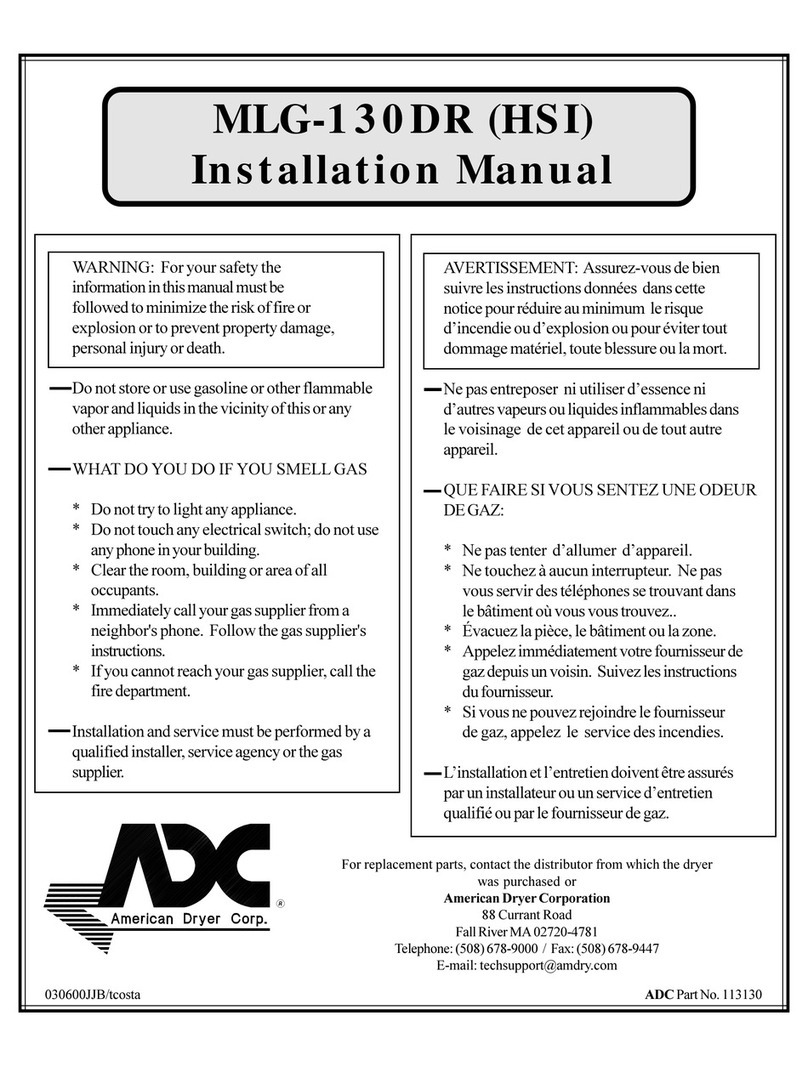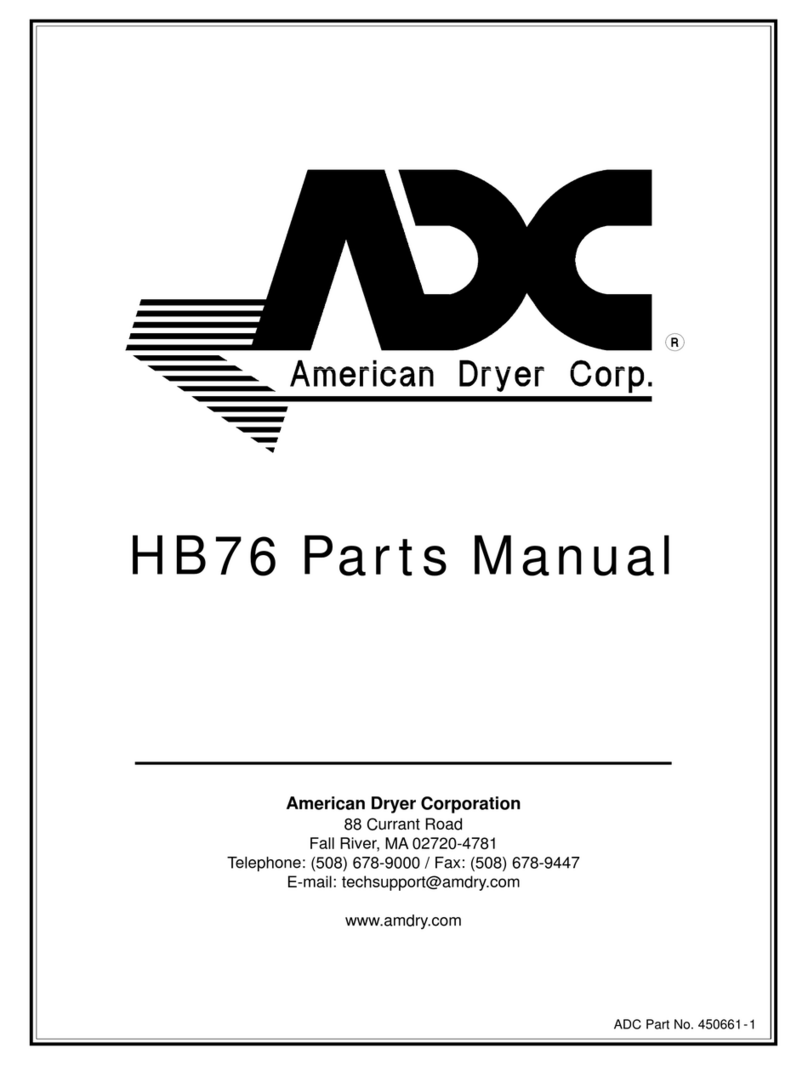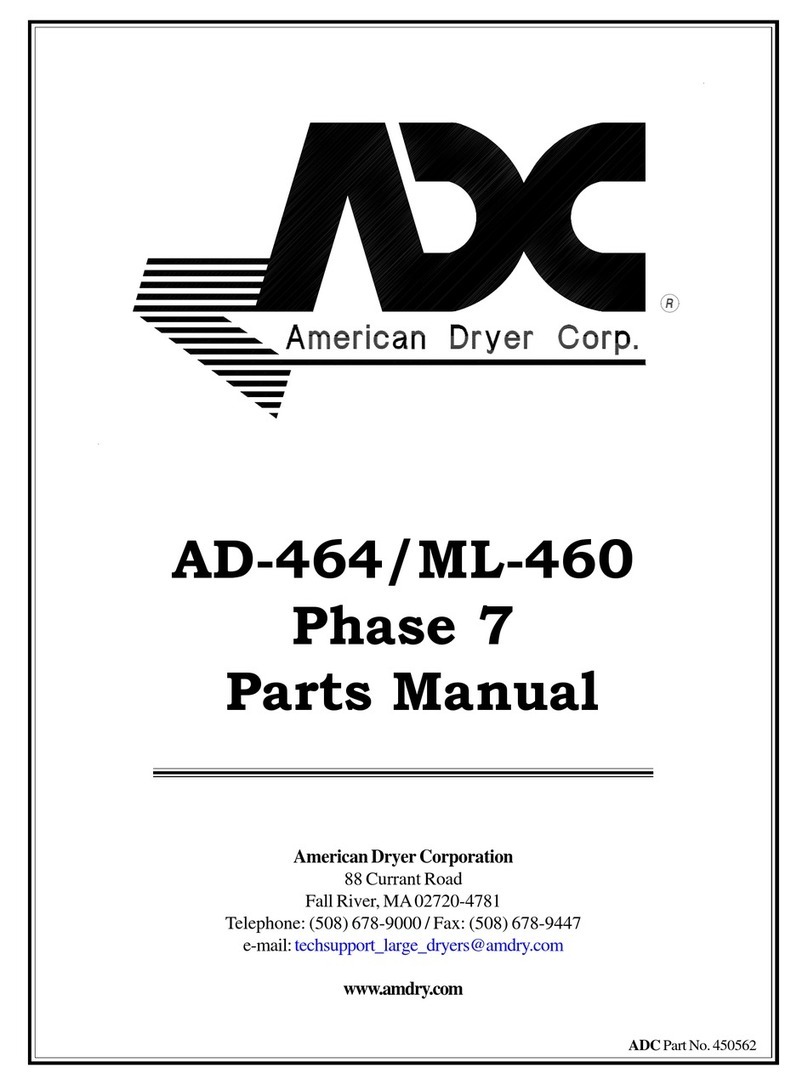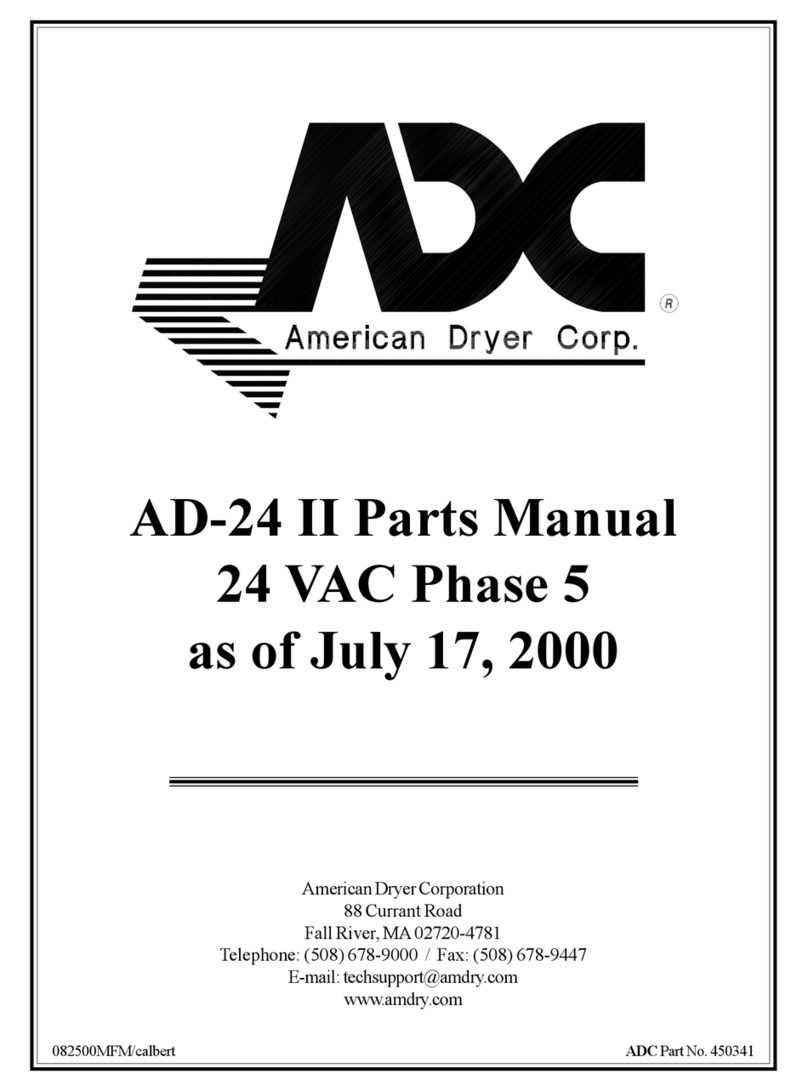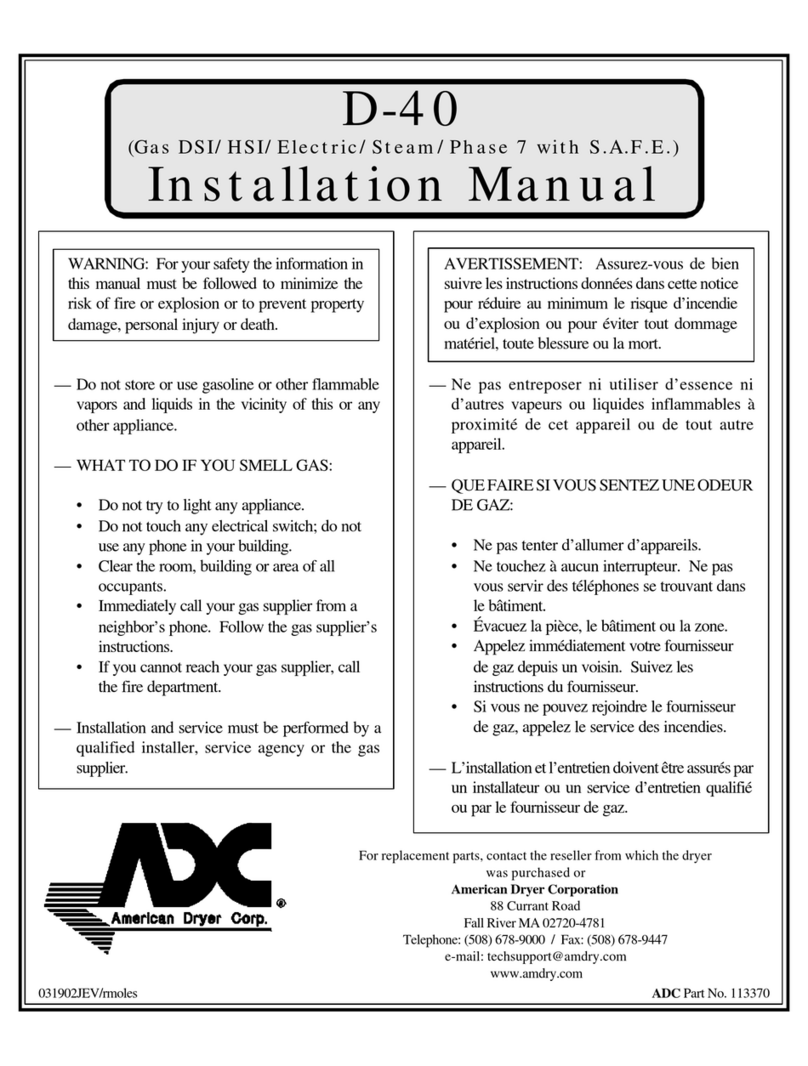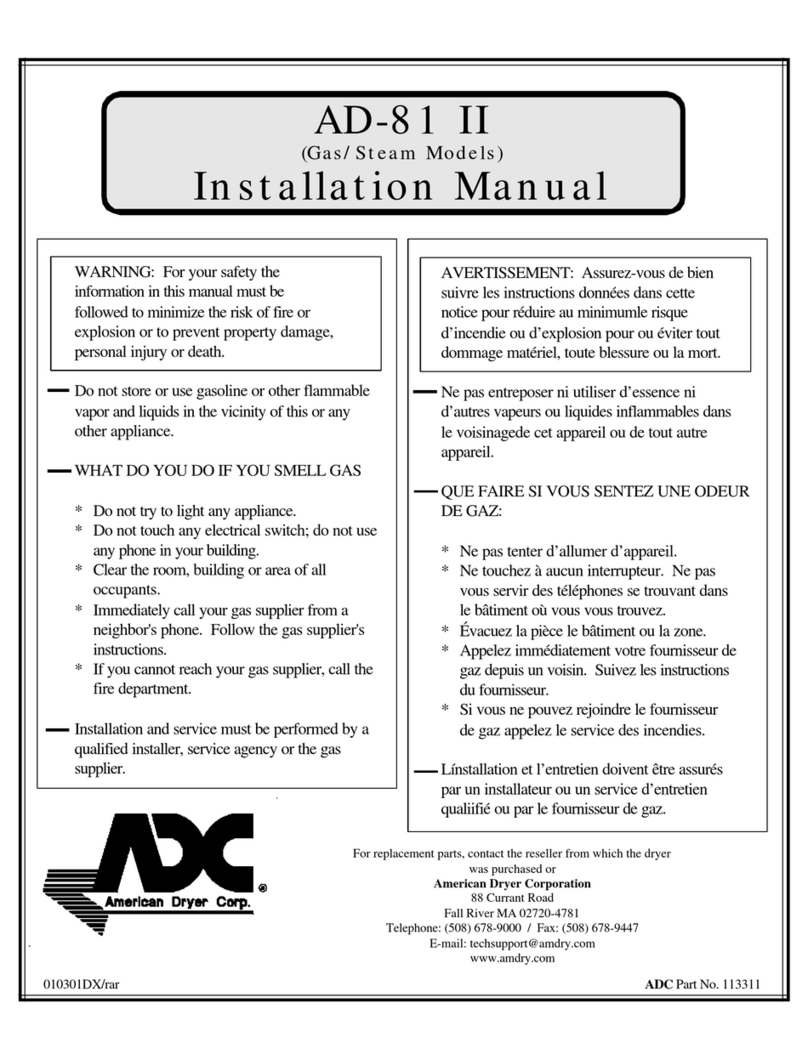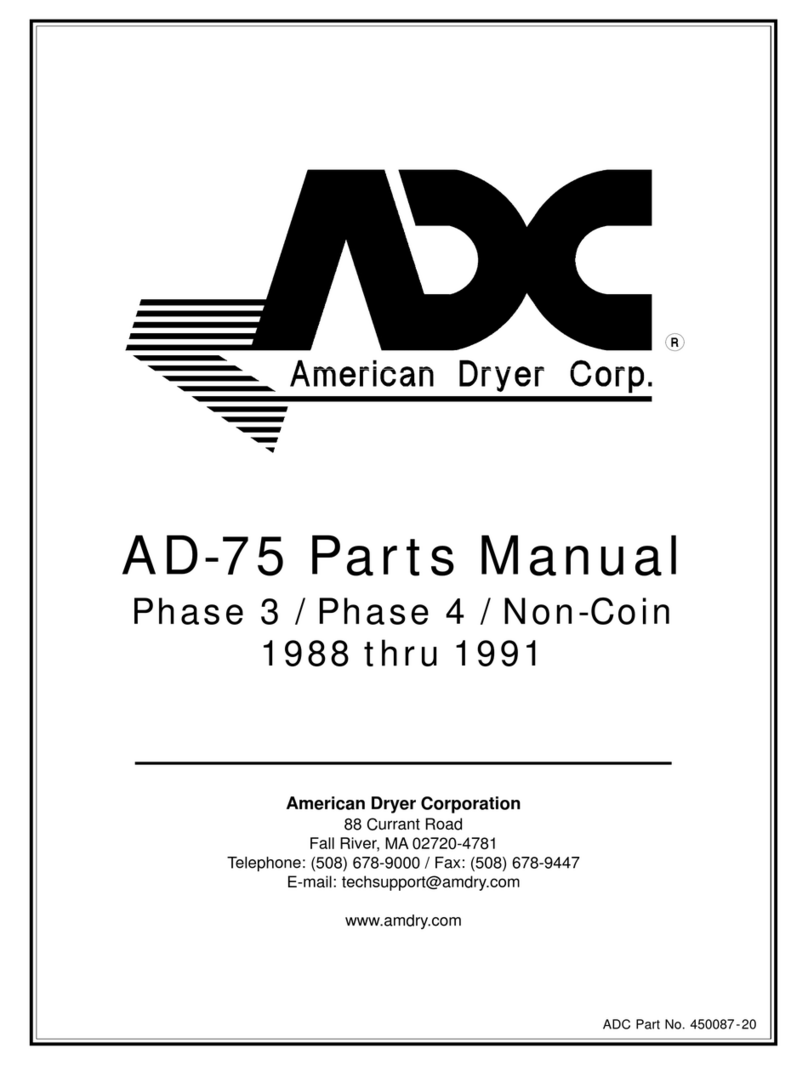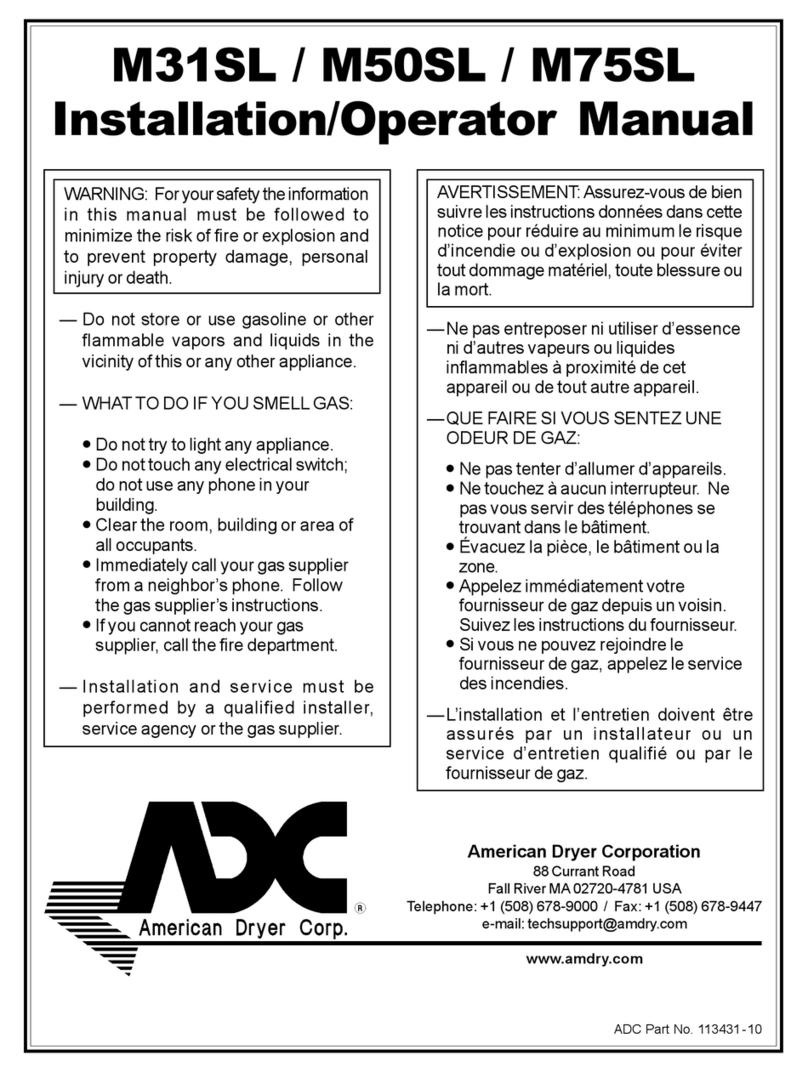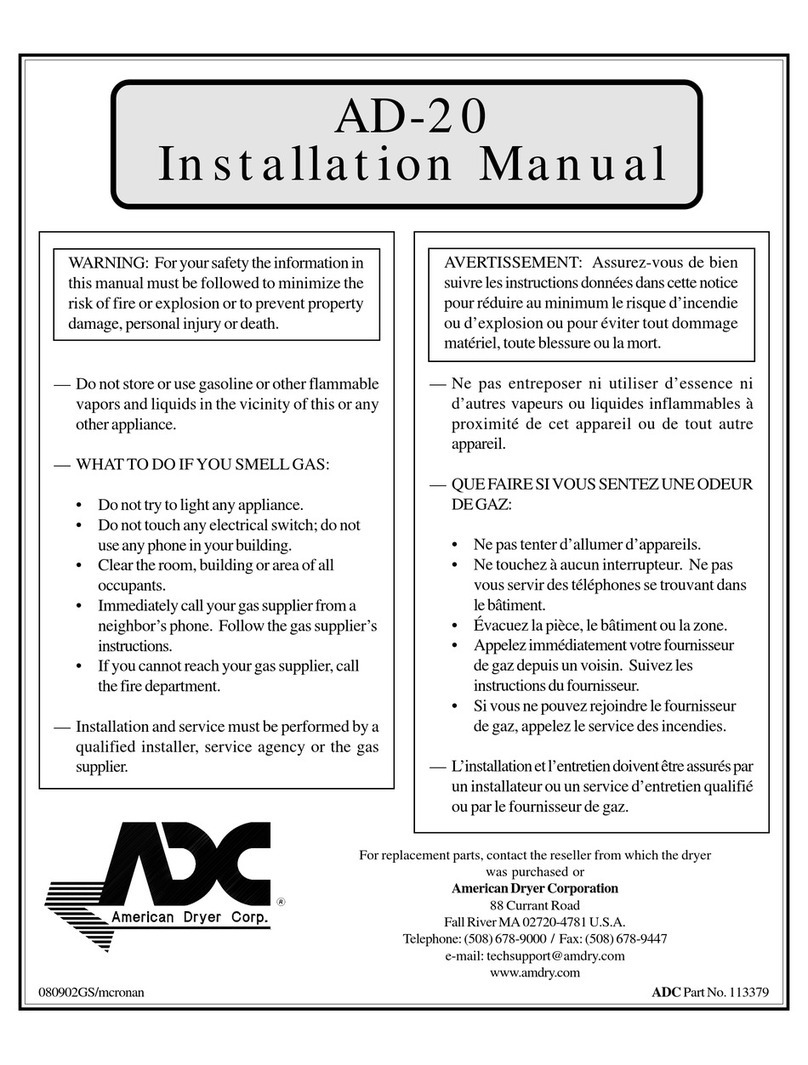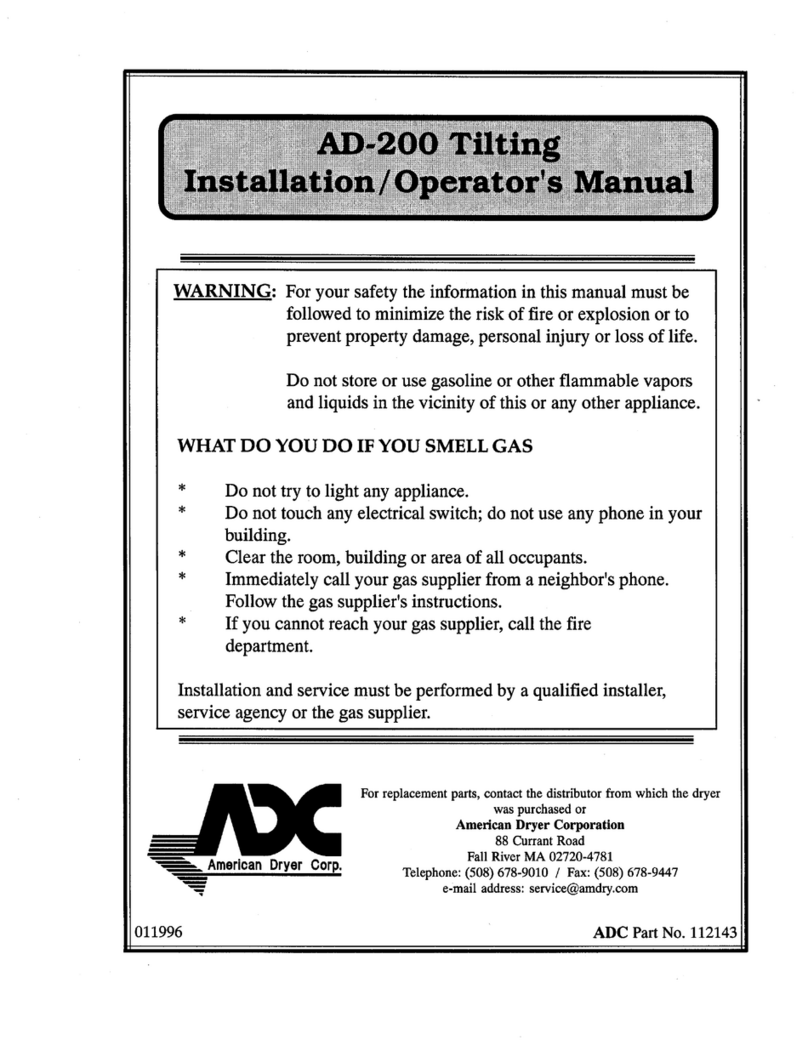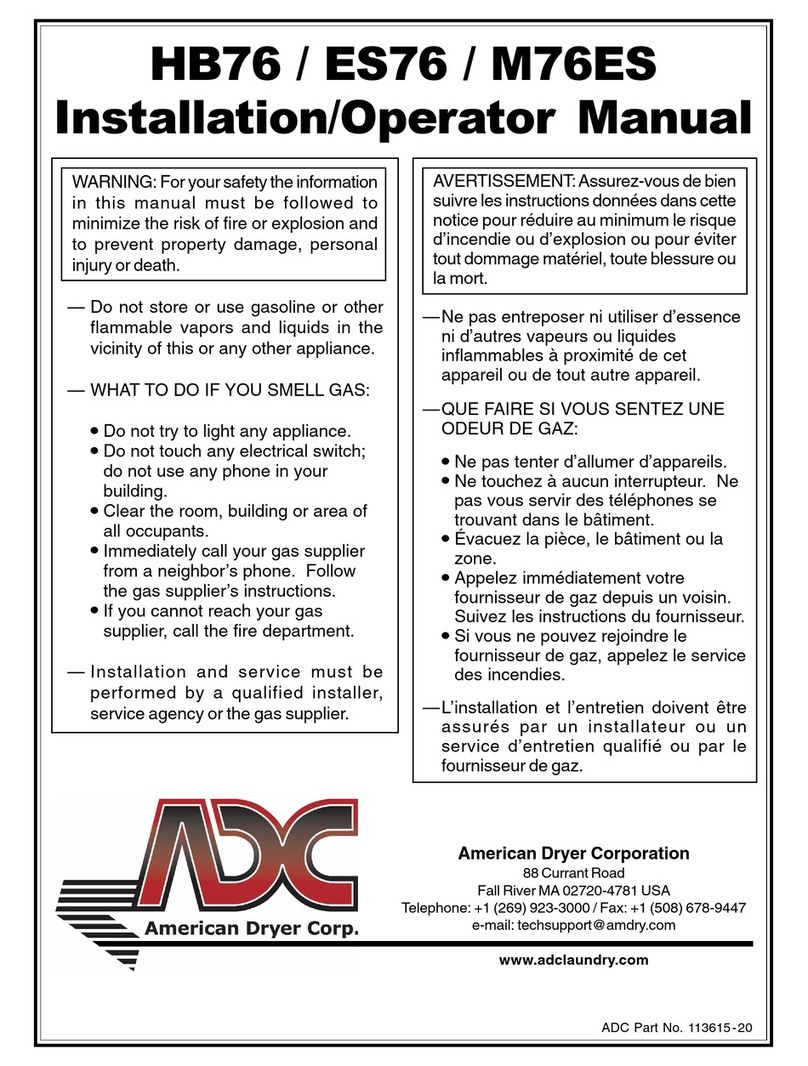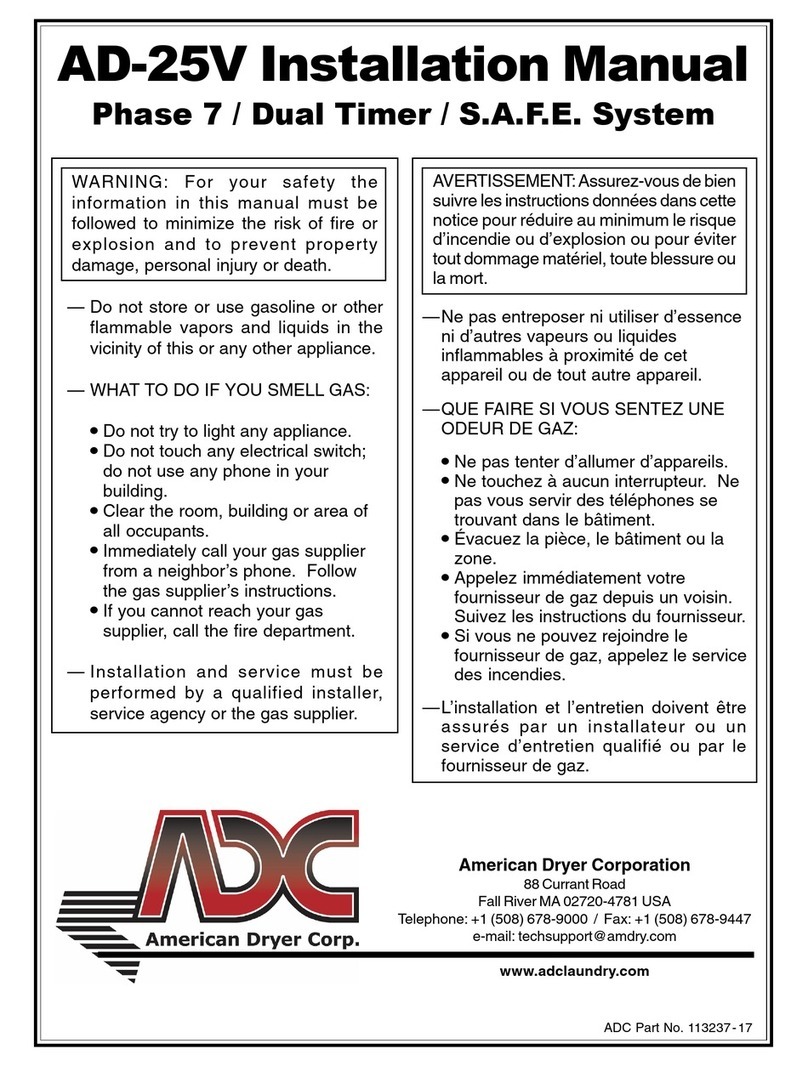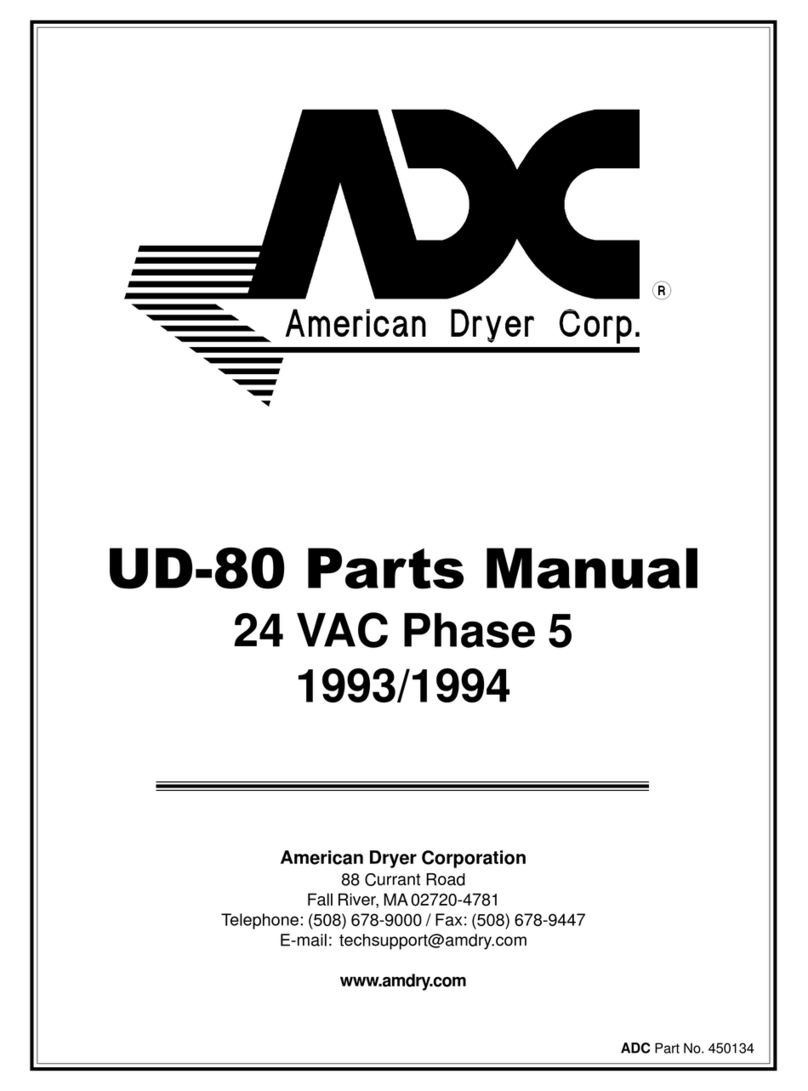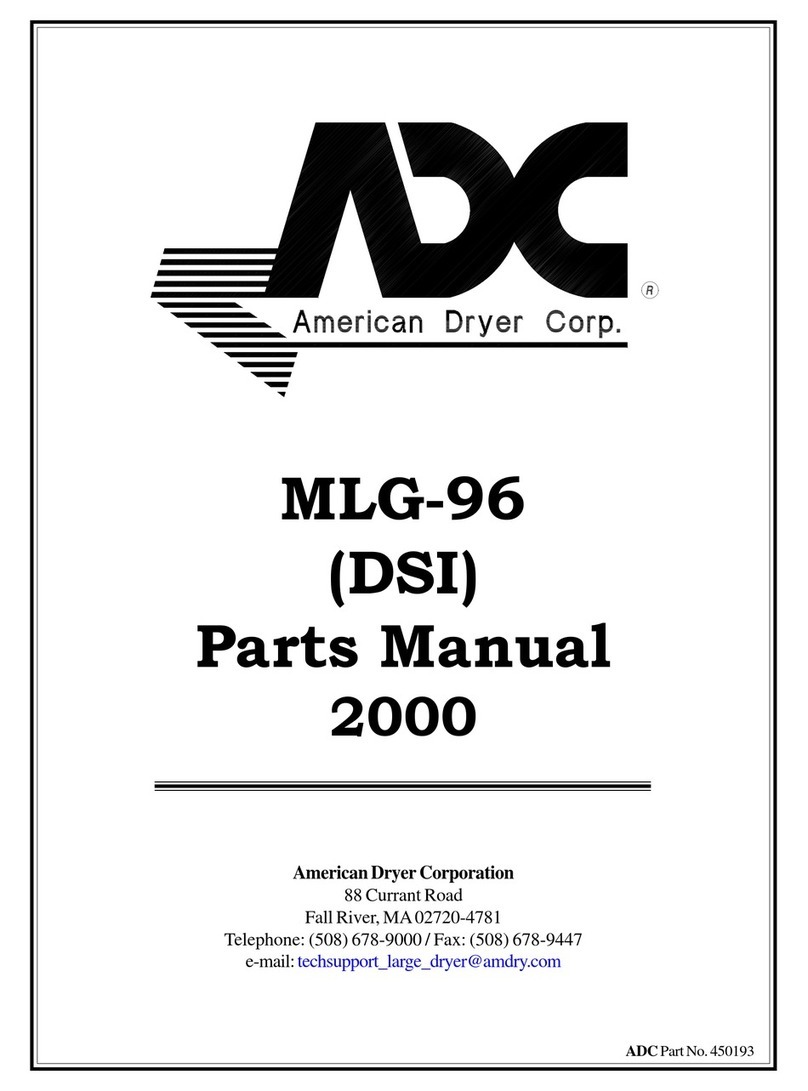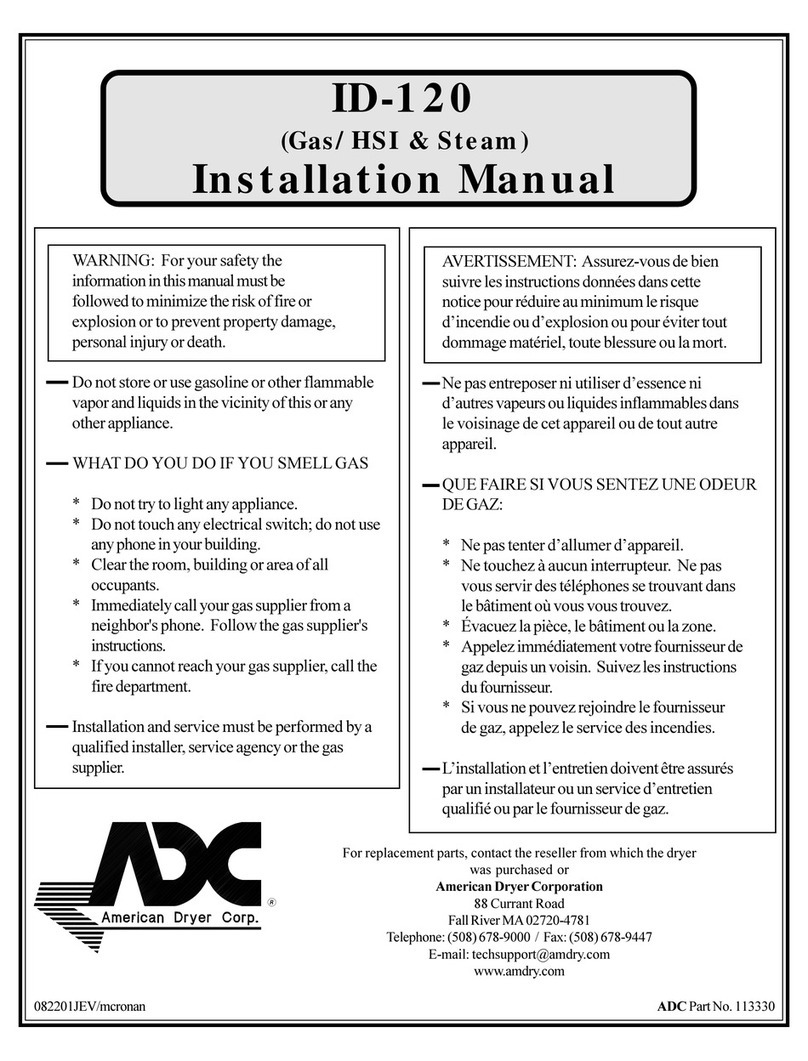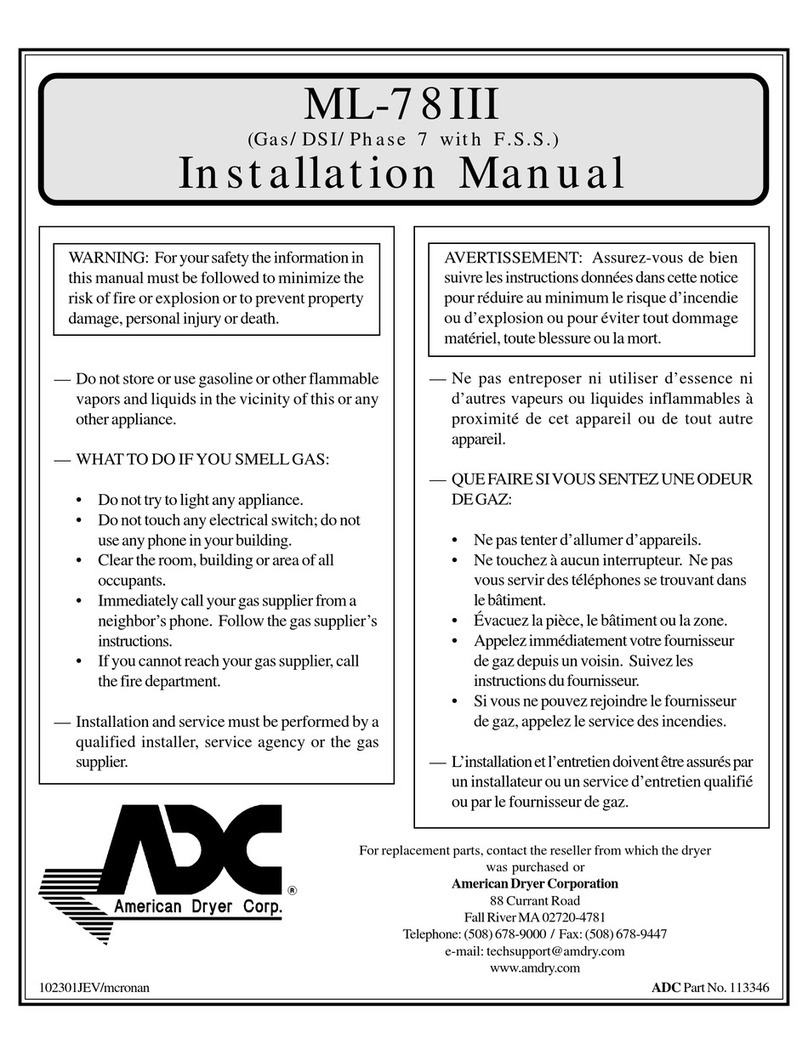
112808-11 www.adclaundry.com 3
IMPORTANT
You must disconnect and lockout the electric supply
and the gas supply or the steam supply before any
covers or guards are removed from the machine to
allow access for cleaning, adjusting, installation, or
testing of any equipment per OSHA standards.
Please observe all safety precautions displayed on
the equipment and/or specified in the installation
manual included with the dryer.
Before installation, check that the local distribution
conditions, nature of gas and pressure, and
adjustment of the appliances are compatible.
CAUTION
Dryer(s) should never be left unattended while in
operation.
When discarding or storing your old clothes
dryer, remove the door.
Lorsque vous entreposez ou mettez votre
sécheuse au rebut, enlevez-en la porte.
“Caution: Label all wires prior to disconnection when
servicing controls. Wiring errors can cause improper
operation.”
«Attention: Au moment de l’entretien des
commandes, étiquetez tous les fils avant de les
débrancher. Des erreurs de câblage peuvent
entraîner un fonctionnement inadéquat et
dangereux.»
FOR YOUR SAFETY
Do not dry mop heads in the dryer. Do not use
dryer in the presence of dry cleaning fumes.
The dryers must not be installed or stored in an area
where it will be exposed to water and/or weather.
The wiring diagram for the dryer is located behind
the control panel.
List of Acronyms __________________________
HVAC Heating, Ventilating, and Air-Conditioning
in WC Inches of Water Column
L.C.D. Liquid Crystal Display
L.P. Liquid Propane
OSHA Occupational Safety and Health Administration
R.M.A. Return Material Authorization
UL Underwriters Laboratory
Proposition 65
Use of this product could expose you to substances
from fuel combustion that contain chemicals
known to the State of California to cause cancer,
birth defects and other reproductive harm.
Table of Contents ___________________
In the State of Massachusetts, the following
installation instructions apply:
■Installations and repairs must be performed by a
qualified or licensed contractor, plumber, or
gasfitter qualified or licensed by the State of
Massachusetts.
■If using a ball valve, it shall be a T-handle type.
■A flexible gas connector, when used, must not
exceed 3 feet.
WARNING
Children should not be allowed to play on or near
the dryer(s). Children should be supervised if near
dryer(s) in operation.
Under no circumstances should the dryer door
switch(es), lint door/drawer switch(es), or heat
safety circuit(s) ever be disabled.
DO NOT MODIFY THIS APPLIANCE.
The dryer must never be operated with any of the
back guards, outer tops, or service panels
removed. Personal injury or fire could result.
The dryer must never be operated without the lint
filter/screen in place, even if an external lint
collection system is used.
If the hi-limit switch trips, a service call is required
to investigate the reason and resolve the issue.
!WARNING
Safety Precautions ................................................ 4
Specifications ........................................................ 6
Installation Procedures ......................................... 9
Location Requirements ........................................................ 9
Unpacking / Setting Up ......................................................... 9
Dryer Enclosure Requirements ............................................ 9
Fresh Air Supply Requirements .......................................... 10
Exhaust Requirements ........................................................10
Electrical Information ........................................................... 12
Gas Information .................................................................. 14
Converting from One Family of Gas to Another...................17
Gas Pressure Testing .........................................................19
Steam Information ...............................................................19
Water Information ...............................................................21
Preparation for Operation / Start-Up ....................................21
Preoperational Test .............................................................22
Preoperational Instructions .................................................22
Shutdown Instructions........................................................23
Service / Parts Information ................................ 23
Service ...............................................................................23
Parts ...................................................................................23
Warranty Information .......................................... 23
Returning Warranty Cards .................................................. 23
Warranty ............................................................................23
Returning Warranty Parts ...................................................23
Routine Maintenance ........................................... 24
Data Label Information ........................................ 25
Programming ....................................................... 26
